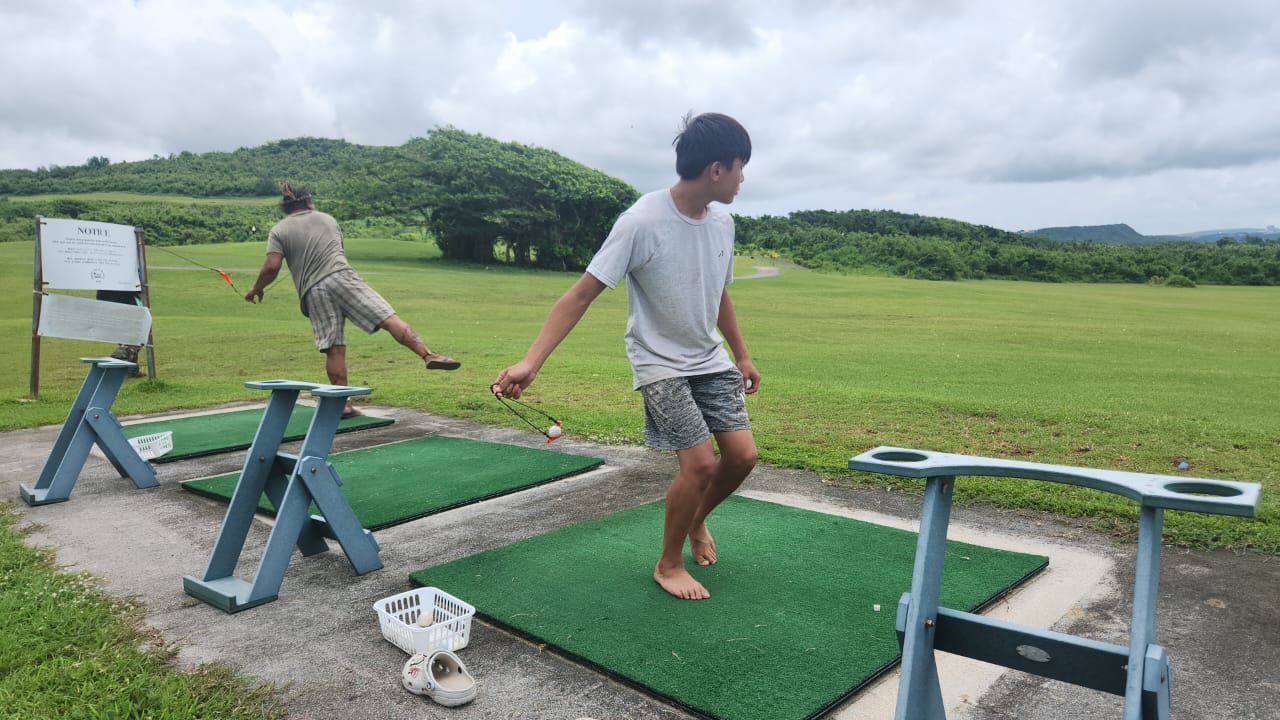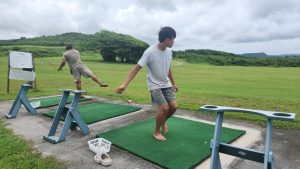
03 Aug Reviving an Ancient Art: The CHamoru Slingstone Finds New Life in Guam’s Sling-Golf Initiative
Reviving an Ancient Art: The CHamoru Slingstone Finds New Life in Guam’s Sling-Golf Initiative
The echoes of the past are never quite silent on the Pacific island of Guam. Among the verdant jungles and azure sea that cradle the island, the collective memory of the ancient CHamoru people is preserved, telling a tale of resilience and survival. One thread in this intricate tapestry is the art of slinging, a practice that is currently experiencing a heartening resurgence.
Traditionally, the slingstone was an essential tool in the daily lives of the CHamoru people. Used in hunting, defense, and even in combat, the ability to sling a stone with precision was often the line between survival and demise. However, with the passage of time and the advent of modernity, the practice had faced the threat of oblivion.
That is, until community partners, committed to preserving and reviving the indigenous culture, decided to breathe new life into this age-old tradition.
This Saturday, at the Country Club of the Pacific (CCP), golfers, caddies, and carts will yield to slingers, slingstones, and the shared determination to keep a culture alive. The driving range, typically reserved for golfing, is being repurposed as a training ground for aspiring slingers to learn and practice.
“Slings and slingstones aren’t just relics of the past, but dynamic pieces of our cultural heritage that deserve to be celebrated,” said Roman Dela Cruz, a leading figure in the revival movement. He went on to express his gratitude to the organizers and sponsors for their “unprecedented support towards Guam’s sling-golf world debut.”
The event will serve as a staging area for slingstone practice, but also as a forum for sharing and exploring different slinging styles, sling-crafting tips, and innovations. Participants can try their hand at distance-accuracy slinging, mass-coordinated slinging, and rapid-fire slinging—techniques that would have been familiar to their CHamoru ancestors.
The initiative to use a modern facility like a golfing driving range for slingstone practice is an innovative approach to cultural revival. It demonstrates that the preservation of traditional practices does not have to be an obstacle to progress, but rather, can be an enriching facet of modern society.
It’s the hope of the organizers that events like this will spark interest in younger generations and help to continue the cycle of cultural preservation. By reintroducing the slingstone in a new context, they are offering a tangible link to the past, and a means to learn from it.
As Guam’s sling-golf initiative demonstrates, cultural revival is a collaborative effort. Community partners have come together to support this endeavor, combining resources, expertise, and a shared love for CHamoru culture to make this event possible.
So, come Saturday, a new chapter in Guam’s cultural revival story will be written. Under the tropical sun, the thud of slingstones will blend with the murmuring of the sea, and the spirit of the ancient CHamoru will soar once again, borne aloft on the wings of their cherished tradition, reborn anew.


